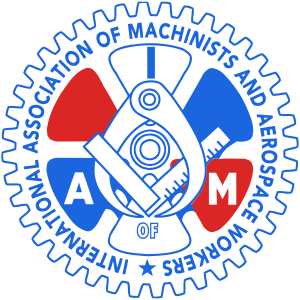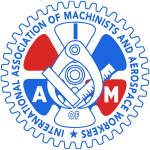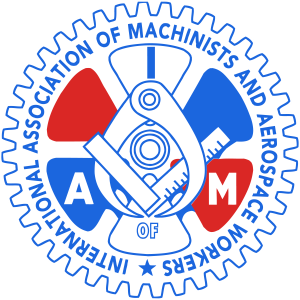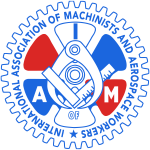 There are three important challenges to the concept of a rail union coalition:
There are three important challenges to the concept of a rail union coalition:
1) finding the means to keep the rail unions together through the complete bargaining process,
2) addressing in a national forum collective bargaining issues that were “local” in nature, and
3) addressing the issues that were “national” in nature in concert with rail labor organizations that were bargaining independently from the Rail Labor Bargaining Coalition (RLBC).
There was some limited success of informal bargaining coalitions among rail labor unions in 2004 and 2007. As such, rail labor in 2004 began to debate the benefits and/or requirements of local vs. national handling and, importantly, the pros and cons of forming a coalition.
Background of Coalition Bargaining:
Through years of bargaining history and at least one court decision (General Committee of Adjust v
Burlington No Santa Fe 2002), national bargaining in the rail industry is conducted with those carriers that
choose to join the National Carriers Conference Committee (NCCC) and to be represented by their
spokesman and representative body, the chair of the National Railway Labor Conference (NRLC). Since at
least 1982 each of the Class I carriers, which today include Class I carriers and a varying number of smaller
regional and terminal railroads, come together under the collective banner of the NCCC and are represented
by an independent body of full-time permanent employees that work for the NRLC.
In 1982, 76 railroad carriers were part of national handling. In 2007 that number was 14. In the last
bargaining round there were the five Class I carriers (listed in Table 1), their subsidiaries, and nine regional or terminal railroads (Allen 2004). In the bargaining rounds since 1982, the vast majority of the rail industry has been represented by the NRLC, the differing numbers owing mainly to railroad mergers.
TABLE 1
U.S. Class I Carriers
| CSX Transportation | Major eastern railroad | |||
| Norfolk Southern Railway | Major eastern railroad | |||
| Burlington Northern/Santa Fe Railroad | Major western railroad | |||
| Union Pacific | Major western railroad | |||
| Kansas City Southern | Midwestern railroad |
In contrast, the number of rail unions has been relatively constant for recent rounds. There are 12
craft unions in the rail industry today. The number of bargaining unions has not changed since 1991. The
Brotherhood of Locomotive Engineers and the Brotherhood of Maintenance of Way Employees, for
example, have affiliated with the Teamsters, but each division is still responsible for collective bargaining
agreements for its members.
Not only are unionized rail workers in the US divided into twelve unions, several of these unions have merged into other unions. This often makes it difficult for them to cooperate, in their members interests, with each other. Let’s see if I can explain some of the convoluted mess.
The BLET and BMWED have merged into the Teamsters and now make up the Teamsters Rail Conference.
The BRC merged into the TCU which in turn merged into the IAM.
The NCFO merged into the SEIU and is now a district of SEIU Local 32BJ.
The Yardmasters merged into the UTU which merged with the SMWIA forming SMART.
What has varied in recent rounds is the manner and combination of unions as bargaining units that
negotiate with the nation’s rail carriers at the national level. Typically, each rail union negotiates separately
with the NRLC, and if agreements are not reached, a Presidential Emergency Board (PEB) is appointed to
resolve disputes without a strike. To deal with these disputes efficiently, the National Mediation Board—the
independent government agency responsible for labor–management relations in the airline and rail
industries—would assign multiple craft unions and the rail industry to a single PEB. For example, PEB 211,
which led to the conclusion of the 1986 round, was assigned to resolve the collective bargaining differences
of six rail unions with the NCCC. The NCCC represented the rail industry; the six unions were the
Brotherhood of Railway Carmen (BRC), the International Association of Machinists (IAM), the International
Brotherhood of Electrical Workers (IBEW), the International Brotherhood of Firemen and Oilers (IBFO),
the Brotherhood of Maintenance of Way Employees (BMWE), and the Brotherhood of Railroad Signalmen
(BRS). The PEB made recommendations to resolve the collective bargaining issues for each separate union
and the industry (National Mediation Board 2008). In 1991, 11 rail unions were part of PEB 219.3
In these emergency board proceedings, the carriers made their arguments through their bargaining
coalition, the NCCC, and the unions all made their arguments separately. In the hearing for PEB 219, each
rail union represented thousands of employees and multiple collective bargaining agreements, yet received as
little as 10 minutes to make its case in order to accommodate the large number of issues and parties. PEB 219
included a number of concessionary terms for rail labor, particularly train and engine service and
maintenance-of-way employees (Harris 1990). It was this point in time that rail labor began to experiment
with combinations that would eventually lead to stronger coalitions.
In 1996, the BRS promoted and joined an informal coalition of shop craft unions that included the
BRS, the IBEW, the IAM, and the Sheet Metal Workers International Association. The informal coalition
remained together until near the end of the bargaining process, when the BRS left the coalition to pursue its
own interests and to avoid some conflict with the IBEW over jurisdiction of work. An important factor here
was the effort by the NCCC to call for separate discussions for the respective coalition members, leading to
an eventual separation of interests. In the round that ended in the 2003 national agreements, the BRS again
negotiated, and was successful in reaching agreement, independently. Shopcraft unions worked together as an
informal coalition, but without the IAM. The IAM failed to reach agreement in the 2003 round, and an
emergency board was not appointed. The failure of one craft to reach agreement in the round that ended in
2003 would lead to complications in the round that ended in 2007. Pattern bargaining is well established in
the rail industry, causing complications when agreement is not reached by all parties in the same period.
This independent bargaining by rail unions, the grouping of unions at PEB hearings, and the
occasional grouping of some unions in informal coalitions led to mixed results. The round of bargaining that
led to the 2007 national agreements was to see a new and more formal approach to bargaining. In late 2004,
nine of the 12 major rail unions began the formation of the Rail Labor Bargaining Coalition.
Establishing a Formal Coalition:
Faced with the real effects of pattern bargaining in the rail industry and the fractured nature of rail
labor in contrast to the relative cohesive structure of rail carriers the BRS and other labor organizations
involved in national bargaining began discussions prior to the expiration of the moratorium on November 1,
2004. The unions in attendance were the organizations later identified as RLBC members (ATDA, BLE,
BMWE, BRS, IBB, NCFO, and SMWIA) as well as the IBEW and the IAM. There were also discussions
with the UTU and the TCU, although they did not participate formally. Discussed among these unions were
issues related to national handling and local handling as they related to each organization’s specific needs, the
potential for more influence to affect a higher general wage increase, the safety in numbers required to defend
against pressure aimed at reducing health care benefits or increasing the share of the cost, and, importantly,
how a coalition, if formed, would be structured.
There was discussion about the informal model used by some organizations, including those in
attendance, but the consensus was that pressure by an organized management to divide the organizations
would continue to be a problem. In past informal coalition arrangements, the NCCC had successfully
separated unions by holding separate talks, prompted by a willingness to address a issue of specific interest to
the individual union. If a union is faced with an issue that its members want addressed, and that issue does
not apply to other unions in the informal coalition, it is difficult, if not unlikely, that an organization faced
with the potential to resolve such a problem would resist in solidarity with unions not responsible for its
unique membership problem.
The coalition agreement document included the IAM in its preamble and the IBEW and the IAM on
its signature page. These unions expressed interest and were part of the discussions that developed the
strategy. However, the executed agreement did not bear the signatures of these organizations. Both the IBEW
and the IAM later bargained in the 2004 round (that led to the 2007 agreements) with a coalition headed by
the TCU, which had become an affiliate member of the IAM. The principles spelled out by the RLBC
members in their coalition document were as follows:
For many years, rail labor conducted national bargaining with the nation’s Class I rail carriers
via coordinated union coalitions. Using this method, the unions were able to achieve very
beneficial changes in rates of pay, rules, and standard working conditions for the employees
they represent.
In recent years, the organizations have strayed from that concept and have bargained for
national agreements on an individual-organization basis, without coordination among the
organizations; this has resulted in the frustration of bargaining goals, extended negotiations,
and overlong mediation efforts, to the detriment of employees in all crafts.
It has become very evident that settlements of national wage and rules bargaining disputes
will be reached more expeditiously and successfully if the organizations coordinate their
bargaining efforts.
Coordinated handling of national bargaining issues can best be accomplished by creating a
formal entity to which participating organizations grant their powers of attorney and pledge
their cooperation and, where necessary, financial commitment.
If rail unions choose to coalesce into structured bargaining units, they can function with solidarity
and continue to exercise their duty to represent their respective members while addressing craft-specific or
less-than-craft-wide specific issues. Rail carriers operating as a multi-employer bargaining unit can be brought,
albeit reluctantly, to terms of agreement that can be ratified by the coalition member unions.
References:
Allen, R. 2004. National Carriers Conference Committee Section 6 Notice.
Arnold, B., and Reggi Dudin. 1985. “Eastern and Pan Am: Two Model Contracts Fly into Trouble.” Business
Week.
Business Week. 1984. “Continental Is Coming Out a Winner.” January 30, p. 21.
General Committee of Adjustment v Burlington No Santa Fe. 2002, July 19. <https://caselaw.lp. findlaw.com/cgibin/getcase.pl?court=dc&navby=docket&no=017068>. [July 24, 2008].
Harris, R. 1990. Report to the President by Emergency Board No. 219. <https://kas.cuadra.com/starweb1/
nmbks/servlet.starweb1>. [January 9, 2007].
Katz, H. 1984. “Collective Bargaining in 1982: A Turning Point in Industrial Relations?” “Compensation Review
(1st quarter) pp. 38–49.
Labor Notes. 1986. “Who Says Concessions Are a Thing of the Past?” June, p. 1.
LaCombe J., and J. Borum. 1987. “Major Labor Contracts in 1986 Provided Record Low Wage Adjustments.” Monthly Labor Review (May), pp. 10–12.
Moody, K. 1986. “Newswatch.” Labor Notes, June, p. 6.
National Bargaining Coalition Agreement. November 22, 2004.
National Mediation Board. 2008. Presidential Emergency Boards. <https://www.nmb.gov/mediation/
peblist.html>. [September 23, 2008].
Ruben, G. 1985. “Modest Labor–Management Bargains Continue in 1984 Despite the Recovery.” Current
Wage Developments 7/4.
Shils, E. 1964. “Transportation’s Labor Crisis.” Harvard Business Review, (May–June), p. 85.
Tarpinian, G. 1986. “Bargaining Trends.” Economic Notes Labor Research Assocication (April/May), pp. 1–5.






